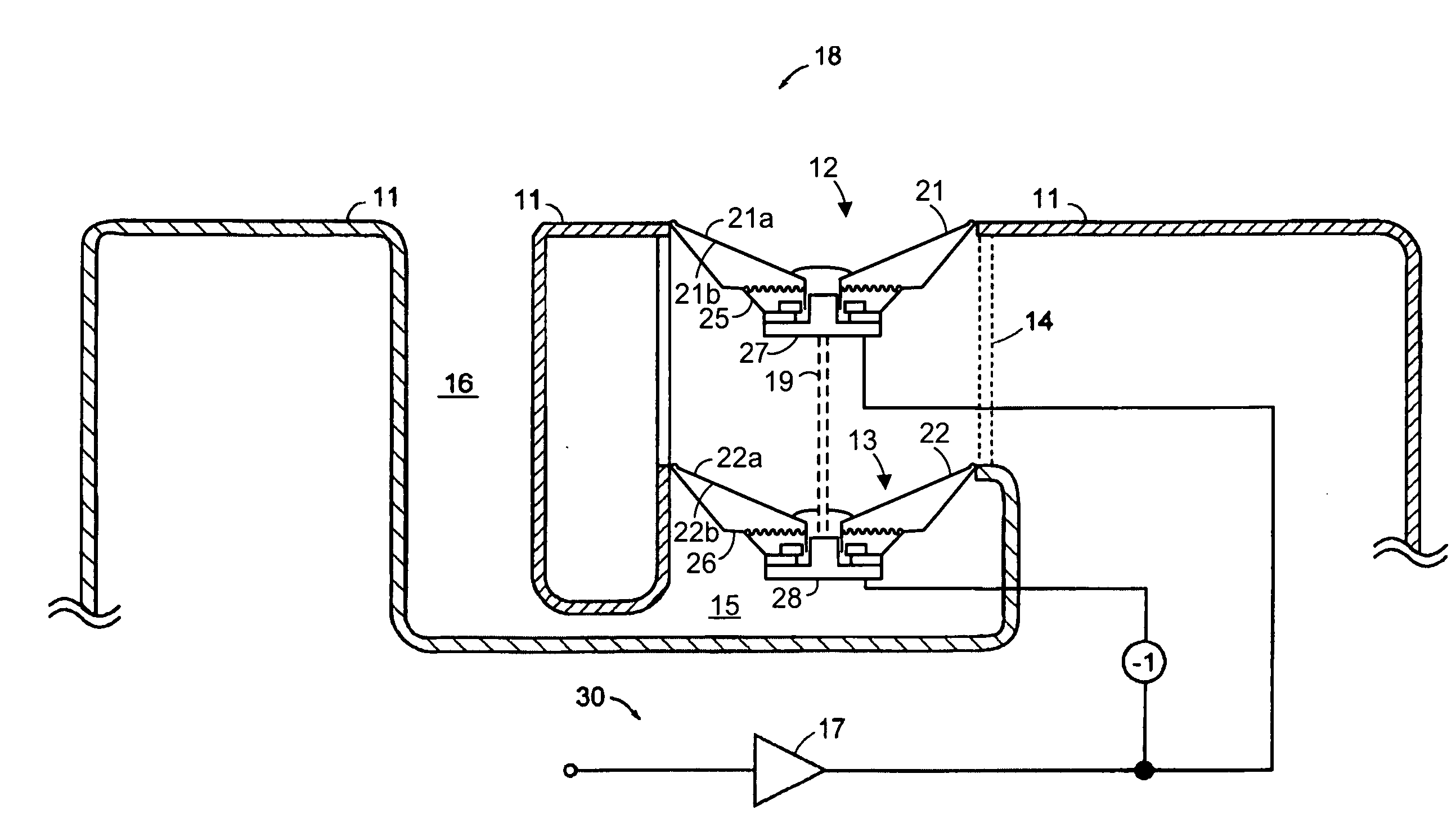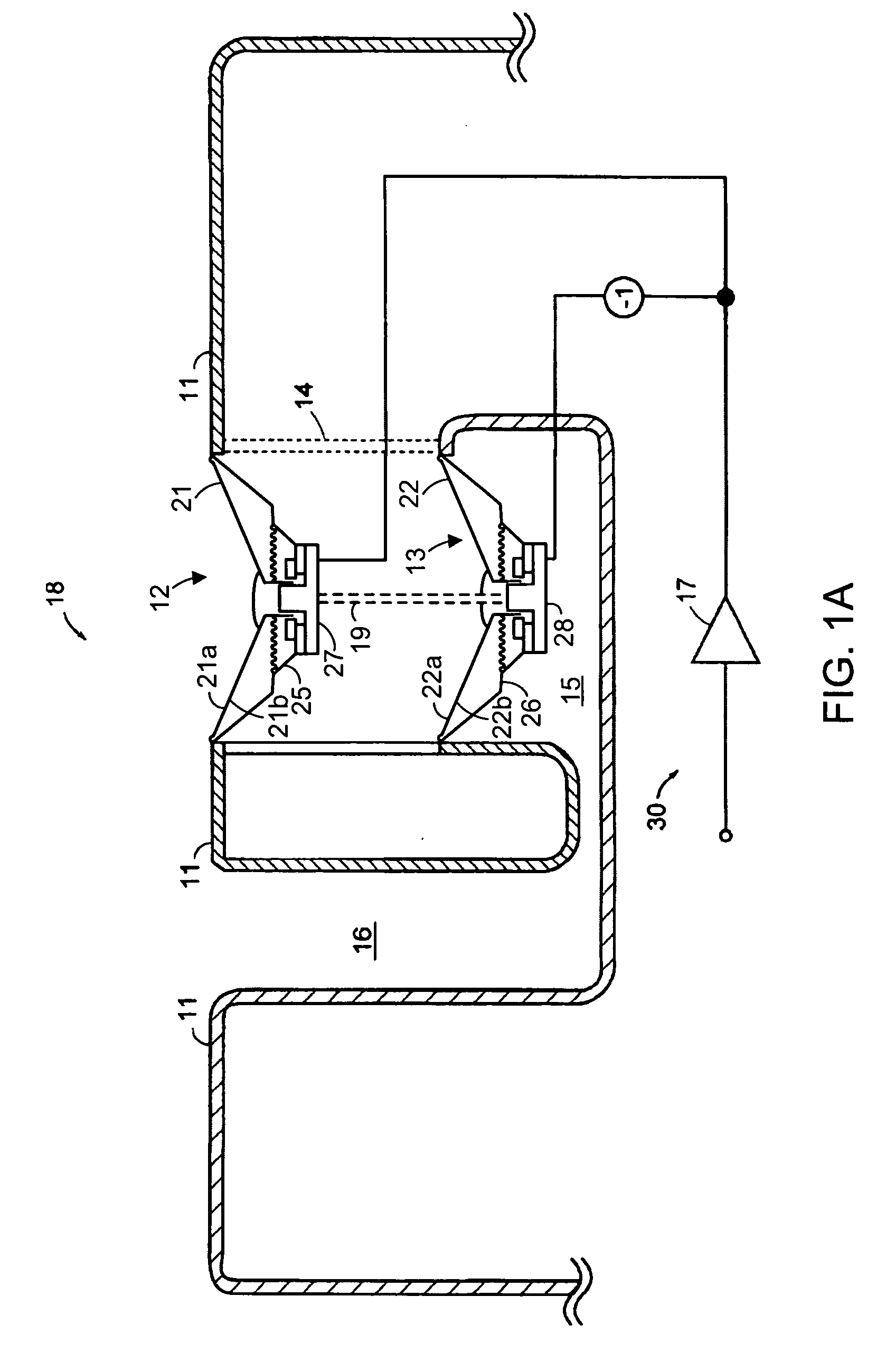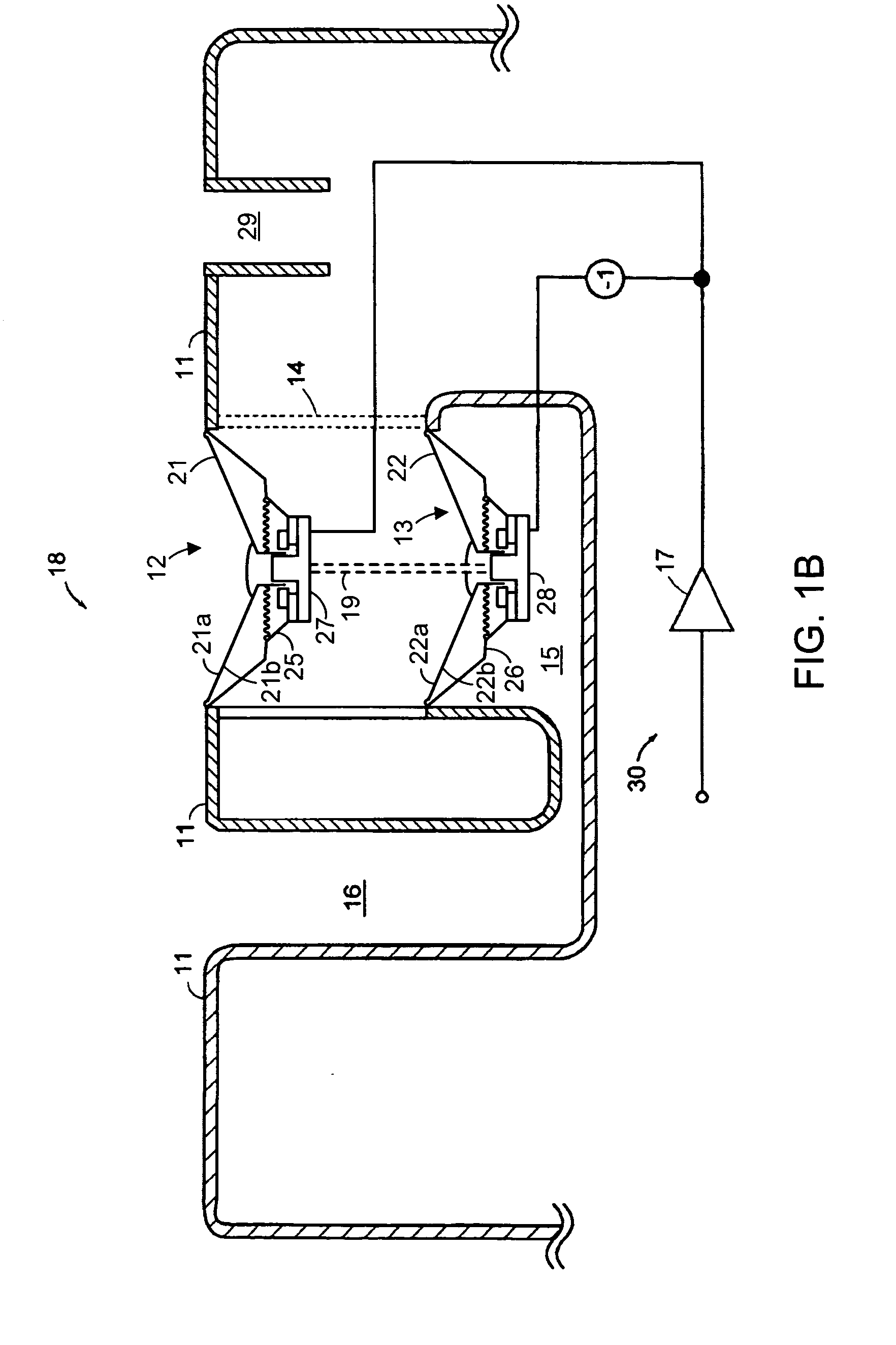Baffle vibration reducing
a technology of vibration reduction and baffle, which is applied in the direction of transducer casings/cabinets/supports, electrical transducers, transportation and packaging, etc., can solve the problems of excessive vibration of the structure, insufficient stiffness of the structure to resist vibration, and light damped, so as to reduce the resultant force applied, reduce unwanted mechanical vibration of the supporting structure, and enhance acoustic output
- Summary
- Abstract
- Description
- Claims
- Application Information
AI Technical Summary
Benefits of technology
Problems solved by technology
Method used
Image
Examples
Embodiment Construction
[0060] With reference now to the drawings and more particularly FIG. 1A thereof, there is shown a diagrammatic representation of an embodiment of the invention with structure carried by infinite baffle 11, typically a vehicle rear shelf or door panel carrying a first transducer 12, such as a loudspeaker driver, mechanically connected to a second transducer 13, such as a loudspeaker driver, preferably identical to the first transducer 12, through a mechanical link 14. The two transducers 12, 13 are ideally mounted in substantially parallel planes such that diaphragms 21, 22 of the two transducers 12, 13 move in the same axial direction. Although the infinite baffle 11 is described as a rear shelf or door panel in a vehicle, the infinite baffle 11 can be a structural panel, a wall, a ceiling, or a floor in a room, for example.
[0061] A first surface 21a of the diaphragm 21 of the first transducer 12 is acoustically coupled to a listening area 18. If the baffle 11 is the rear package s...
PUM
 Login to View More
Login to View More Abstract
Description
Claims
Application Information
 Login to View More
Login to View More - R&D
- Intellectual Property
- Life Sciences
- Materials
- Tech Scout
- Unparalleled Data Quality
- Higher Quality Content
- 60% Fewer Hallucinations
Browse by: Latest US Patents, China's latest patents, Technical Efficacy Thesaurus, Application Domain, Technology Topic, Popular Technical Reports.
© 2025 PatSnap. All rights reserved.Legal|Privacy policy|Modern Slavery Act Transparency Statement|Sitemap|About US| Contact US: help@patsnap.com



